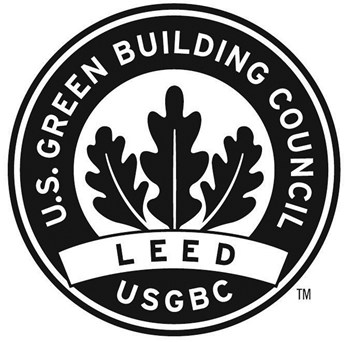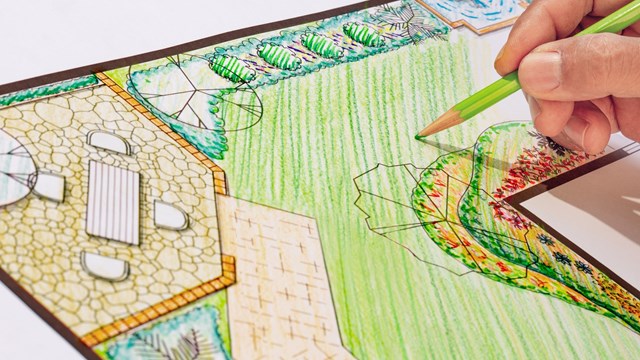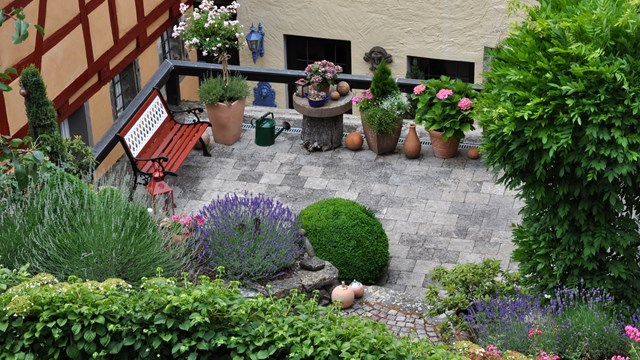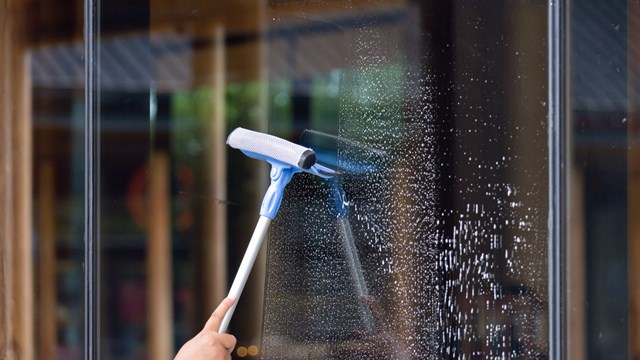
There are two ways—and only two ways—to balance a budget: increase revenue or decrease spending. Whether you’re the treasurer of a co-op board or the President of the United States, those are the only two levers at your disposal.
Energy is no different. With the global population soaring, with oil reserves plateauing just as new markets are emerging in China and India—and with the climate changing at an unsustainable rate—the need to both increase sources of energy and conserve the ones we have has never been more vital.
The Gold Standard
Cities like Chicago comprise a golden opportunity to do just that. Illinois is second only to Colorado in per capita green living space, and the Windy City is among the national leaders in green building, with more square feet of green roofs, and more LEED-certified buildings than any other metropolitan area in the United States.
Since it was first implemented 20 years ago, the U.S. Green Building Council (USGBC)'s LEED certification has been the gold standard when it comes to measuring a building's environmental conscience. Being LEED-certified at any level means that much thought and planning was put into a building before ground was even broken to begin construction. LEED buildings have an array of advantages over non-certified buildings—some of which are wallet-based, some of which are body- and health-based.
According to the USGBC, the residential market—from multi- to single-family, from market rate to affordable housing, is reaping the benefits of using green building techniques. Since the launch of LEED for Homes in 2008, more than 39,000 homes have received LEED for Homes certification and over 111,000 are registered for certification. Over half of all LEED-certified homes are in the affordable housing category, the USGBC says.
In January 2013, the U.S. Green Building Council (USGBC) announced that Illinois was ranked fourth in the nation in new Leadership in Energy and Environmental Design (LEED) certifications.
“Illinois has demonstrated its unwavering commitment to USGBC’s vision of a sustainable-built environment within a generation,” says Jason Hartke, USGBC vice president of advocacy and policy.
“I applaud the extraordinary leadership of those in Illinois—designers, architects, chapter advocates, public officials, everyday citizens—who are working to create the healthiest possible environment for people to work, live and play in.”
The annual study ranks states based on the amount of LEED-certified space per capita. With 140 million square feet of LEED-certified space, Illinois certified 1.94 square feet per resident—behind only the states of Virginia, Colorado and Massachusetts. In 2012, Illinois certified 156 LEED projects including the Chicago Center for Green Technology and the KONE Centre in Moline, which is the first Illinois project to earn a platinum rating.
The state's certified 156 LEED projects represents 25 million square feet of real estate. In total, the state now has more than 700 LEED certified projects, representing more than 140 million square feet of real estate. That’s the equivalent of 30 Willis Towers.
LEED-ing the Way
What is LEED? Why is it the golden standard? How can boards go about making their buildings LEED-certified? And would they want to?
In 1993, a troika of prescient industry experts—Rick Fedrizzi, David Gottfried and Mike Italiano—founded the U.S. Green Building Council, to promote sustainability in building and construction. They gathered representatives from a wide swath of architecture firms, and set to work on a system to rate buildings according to how “green” they were. Seven years later, the Leadership in Energy and Environmental Design building certification system was unveiled, consisting of a series of criteria to quantify how energy efficient buildings are.
“It’s expanded since its inception,” says David Ahrens, president of the New York chapter of the Association of Energy Engineers (AEE). “Right now, it consists of nine different ratings systems.” The nine systems represent nine different categories of buildings. The ones relevant to residential buildings are:
New Construction Here, LEED has made a quantifiable difference. Since 2004, all new buildings constructed in Chicago have been LEED certified.
Core and Shell “Not what’s inside,” Ahrens explains, but the exterior of a building and its central systems.
Existing Buildings: Operations & Maintenance (EBOM) A green HVAC system and state-of-the-art windows go a long way.
By the Numbers
Each category is broken down into a series of indices, and each index is rated. The score is then aggregated, and the result is a number from 1-100. Forty to 49 is LEED-certified; 50-59 is silver; 60-79 is gold; and above 80 is platinum, Ahrens explains. This past January, the Chicago Center for Green Technology (CCGT) was awarded a Platinum Certification—a score above 80—by the USGBC under the EBOM classification.
“The Chicago Center for Green Technology is the city’s first building to receive LEED Certification for New Construction and for Operations and Maintenance,” Mayor Rahm Emanuel remarked at the time. “This is important because it demonstrates the city of Chicago is committed to not only building green, but also operating our municipal facilities in a manner that is energy efficient, conserves resources, and provides a healthy indoor environment for our employees and the constituents they serve.”
The CCGT was the first municipally-owned building in the nation to receive Platinum Certification under the USGBC’s LEED for New Construction when it was built in 2002. Located in Chicago at 445 N. Sacramento Avenue, CCGT is the most comprehensive green design resource in the Midwest, offering seminars, tours, and a resource center.
LEED EBOM recognizes superior performance in five core categories: sustainable sites; water efficiency; energy and atmosphere; materials and resources; and indoor environmental quality. It also recognizes innovation in operation and designates certain priorities based on a building’s geographic location. This is important, because most residential buildings seeking LEED certification are existing buildings, and this will strive for LEED EBOM certification.
Getting Certified
Another organization, the third-party Green Building Certification Institute, provides the certifications. “It certifies individuals as LEED-accredited professionals,” says Ahrens. Certification involves learning about the LEED system, about conservation of building resources, about how to make existing buildings more green.
Not long ago, this sort of environmental movement was the provenance of dreamers and hippies. Now it is something that unites people from across the political divide.
“The idea that you could be green in a cost-effective way is very compelling,” says Ellen Honigstock, the USGBC’s director of construction education and an architect. Once the organization showed the way to achieve energy efficiency, the idea took off.
“LEED didn’t exist in a vacuum,” says Russell Unger, executive director of Urban Green Council, which is the New York arm of the USGBC. “It came after decades of work on climate change. You had a bunch of organizations jump-start this—that overlapped with a change in conventions.” When you consider how to conserve energy, “buildings matter,” Unger says, “because we spend 90 percent of our time there.”
To green your building, Honigstock says, “start to figure out what you already have, how you perform.” The initial steps involve analyzing the usage of energy and establishing benchmarks. “Benchmarking is when you calculate the amount of energy used,” she explains. Then, the professionals get involved. “Architects do an analysis—how to improve windows, lights, heating.” The architects and engineers, she says, will provide estimates on what the upgrades to existing buildings will cost. “There are government initiatives to offset the costs,” she says.
“It’s a fairly expensive process,” she concedes. The up-front price tag is one of the barriers to a wider acceptance. Boards look at the capital investment and get nervous. The idea that a building should spend money now to plan for the future is, in many cases, not the way boards tend to think. Budgets are hard enough to calculate without start-up costs.
This, says Unger, is not the right way to approach the issue. “You’ve got a co-op of people who have 401(k)’s. They’d be thrilled with a 10 percent return.” This is the sort of savings that happens with energy efficiency measures in place. If we think of a home as an investment, he says, that’s the same as a retirement account paying 10 percent. “That’s as good as any stock,” he points out.
The other hurdle is lack of knowledge. In most co-ops and condos, the property managers are the agents of change. They’re the ones who spot trends and advise buildings to try new things. But property managers tend not to be among the many professionals who hold LEED accreditation.
“You know what building managers do. They’re busy. They don’t have time,” Honigstock says. “Boards have to ask managers to do it,” to get the LEED training. “Request an agent to get trained and make the changes,” she advises.
“In the end,” says Unger,” a lot of resistance is hard-wired thinking.” A paradigm shift is required. And it will be worth it. Both Unger and Honigstock agree that getting LEED certification for a building is the single best thing anyone on a board can do for the environment. When asked point-blank if there were any benefits to not moving to a LEED-certified system, Honigstock says, pointedly, “None.”
The push for green buildings has happened at a stunning rate of speed. LEED was still in the larval stages 20 years ago. The ratings systems have only been around for 13 years. The Green Building Certification Institute has only been awarding certifications for five years—a blink of the eye.
Since the days of Mayor Richard Daley, Chicago has been on the vanguard of the green building movement but that wasn’t very long ago. It’s not going to happen overnight and changing to a more eco-friendly state of mind takes time. But experts believe that the fact that so many buildings have gone green is a great boon for the environment.
Greg Olear is a freelance writer and a frequent contributor to The Chicagoland Cooperator.






Leave a Comment